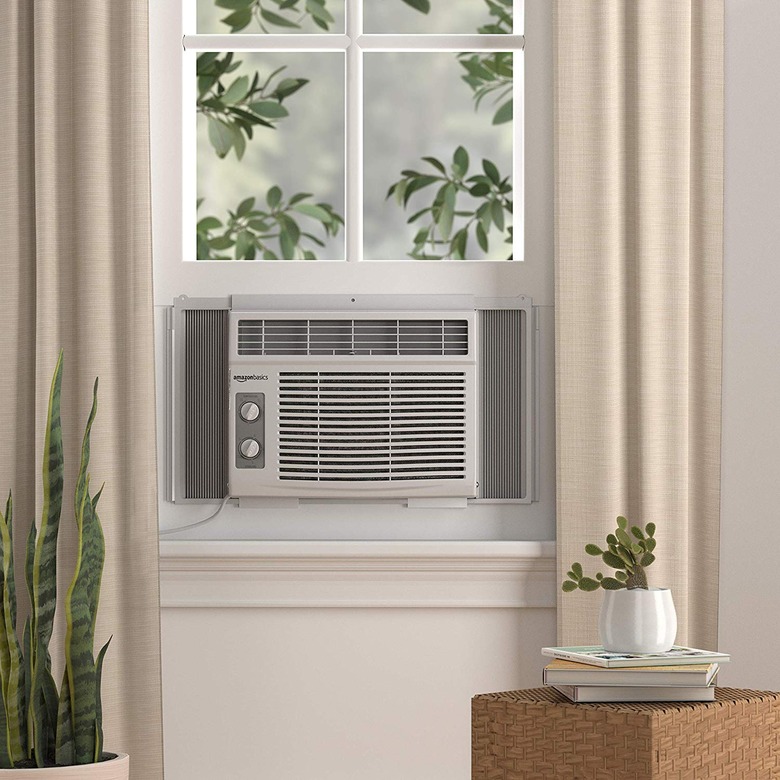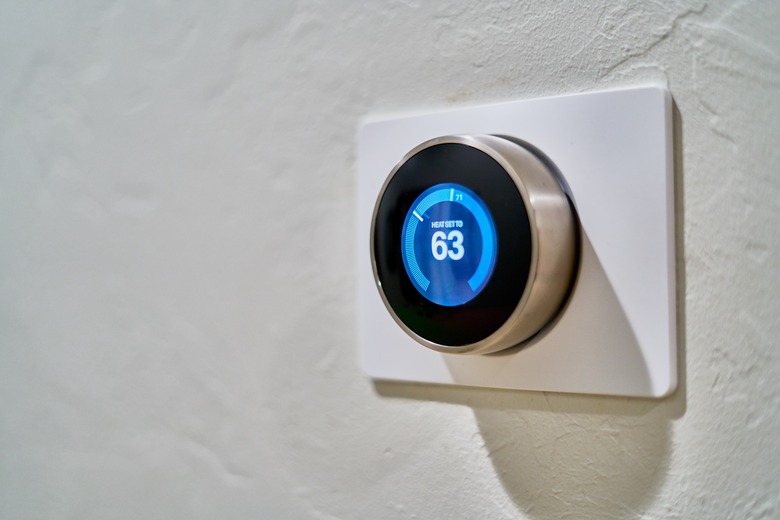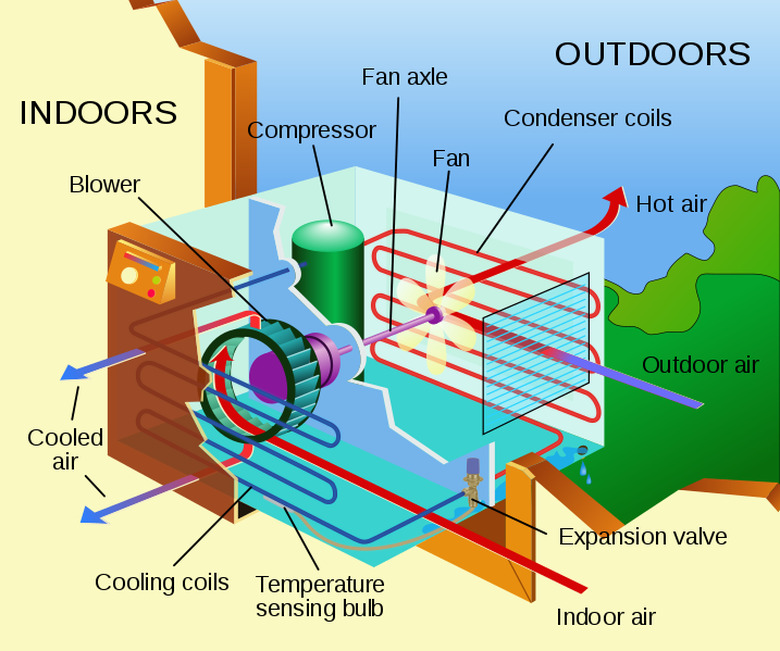What Is A/C Anyway? Here's What Really Happens When You Turn The Air On
Summer is in full swing yet again, which means temperatures keep rising, while our thermostats keep falling — hopefully. There's evidence that evaporative cooling techniques were used as early as the 7th century, but since its invention in the early 1900s, true "conditioned" air has become something most Americans take for granted. (After all, an estimated 90% of American households have some kind of air conditioning setup.) But, what is actually happening when our central air, window unit, or even our car's air conditioning emits that perfectly cooled blast of cold air? And, most importantly, could it potentially be harmful?
We're not the only ones wondering — Google Trends search data shows that queries for "What is A/C?" start to pick up in April, steadily increasing through August. Not surprisingly, people in hot states like Louisiana, Texas, and Florida are most curious about staying cool.
It turns out that the process behind cooling down a room is as simple — and mostly safe — as you might imagine. An air conditioner makes a space cooler by drawing the heat energy out of the room and then sending the hot air outdoors, allowing it to replace the air inside with cooler air.
It starts when air from the room is drawn into a heat exchanger called a cooling coil, which will have either cold refrigerant (a "compound typically found in either a fluid or gaseous state," according to Aire Serve) or water flowing through it. These cooling coils, as you've probably seen, look a lot like the radiator on a car, which also has coolant flowing through finned tubes, over which air flows to cool the engine. This refrigerant or water will be a colder temperature than the air, so the air gives up heat to the fluid and becomes cooler.
The air that is cooled by the coil may be partly or entirely outside air that is used for ventilation to dilute indoor air contaminants, which can be anything from asbestos to cigarette smoke to your officemate's pungent perfume. In some cases, the cooled air could also be partly or entirely indoor air that has been recirculated. As for a car's air conditioning, there isn't much of a difference. A coil cools air inside the car, while another sends the heat removed from the inside of the car outdoors.
So, what about that refrigerant? Is it safe? Mostly, yes, although one form of refrigerant, HCFC-22, is being phased out, as it's harmful to the environment. (Here's how to find out if your A/C contains HCFC-22.)
"There are more risks to being exposed to extreme environments than to being in a thermally controlled environment," Dr. William P. Bahnfleth, professor and director of the Indoor Environment Center at Penn State University, tells Hunker. Bahnfleth does, however, warn of the potential risks for air quality associated with poor maintenance of air conditioning.
"Dirty air filters become sources of contaminants that may contribute to sick-building syndrome, as can biofilms that grow on cooling coils," he explains. "In addition, to save energy, the amount of outdoor air that is brought into a building to control indoor contaminants has sometimes been reduced to too low a level in order to save energy. Inadequate ventilation is also a common cause of air quality problems that can have both acute and chronic effects."
Simply put, you are breathing air that has had its temperature lowered. The rate of airflow and the temperature to which it is cooled are designed to hold the space that is being thermally controlled at your desired temperature. The refrigerant itself stays within the coils, and only the colder air is pushed out.
This may be especially good news to some. In many parts of the world, notably European countries like France, air conditioning is looked down upon for a few reasons — including health hazards. Some believe that running the A/C is a cause of pneumonia and other colds. The old guard typically relies on fans and cold showers. A/C, though, doesn't automatically cause colds.
In Korea, most fans are equipped with sleep timers because of the fear that sleeping with one on will cause death. While some researchers have found a correlation between air-conditioning and increases in respiratory infections, it's more likely attributed to the blasts of cold air drying out the protective mucuses that line the nostrils, which makes it easier for viruses to come in contact with the body. Given that minuscule risk, you can feel totally safe running your air conditioner in your home.
So there you have it: now you know more about what goes on every time you blast the A/C in an effort to beat the heat.
Those of us who attended summer camp as kids might remember another type of air conditioning that is still a popular method in dry climates: Evaporative cooling, commonly also known as a swamp cooler, works by quite simply drawing hot air from the outside through a fan, which then passes over ice or a water-laden sponge, cooling the room. Of course, you would always wake up in a wet, humid mess, but hey, whatever works.



